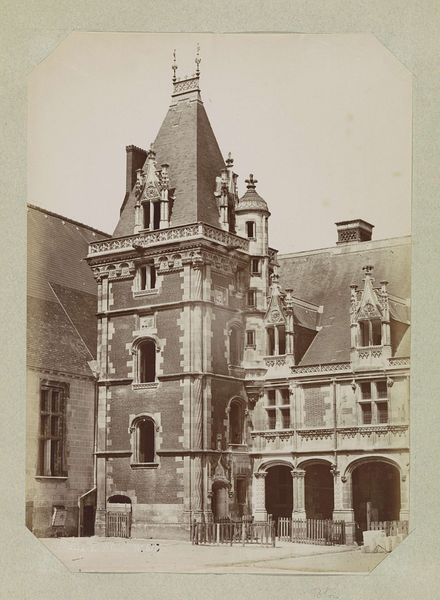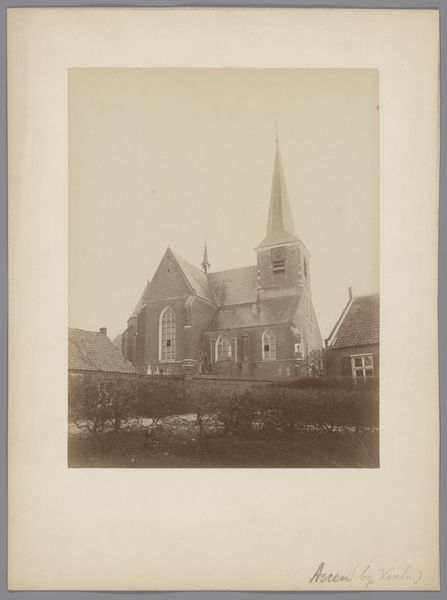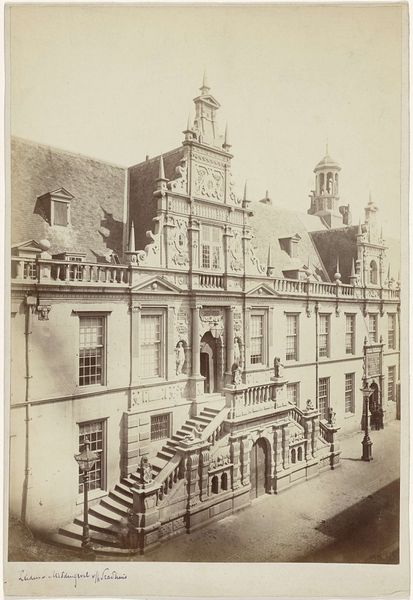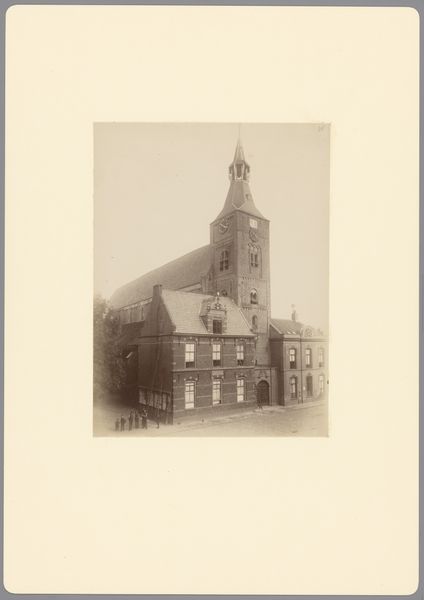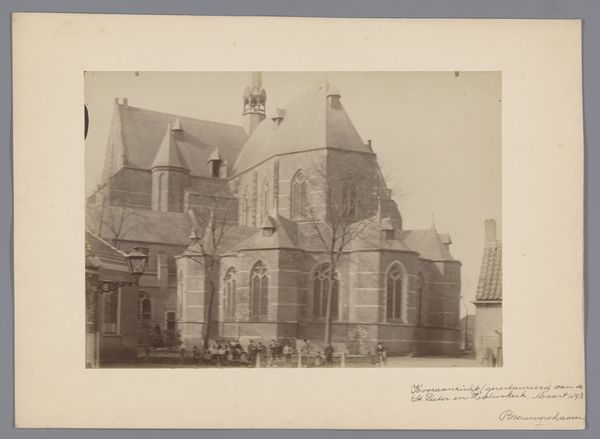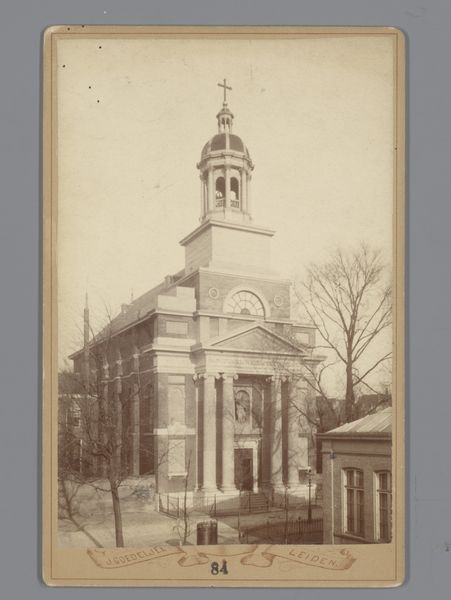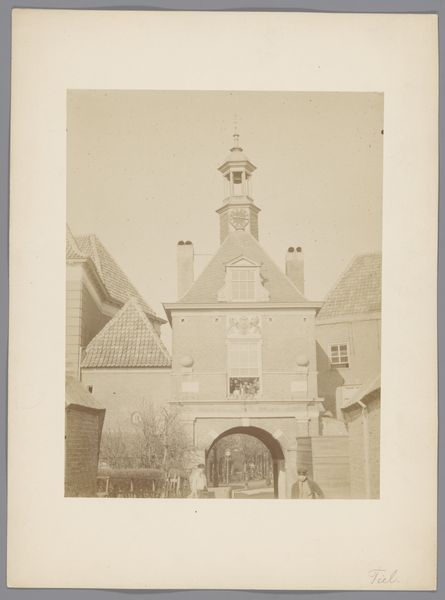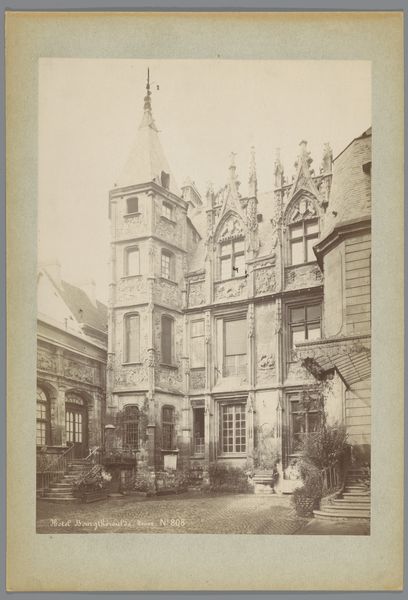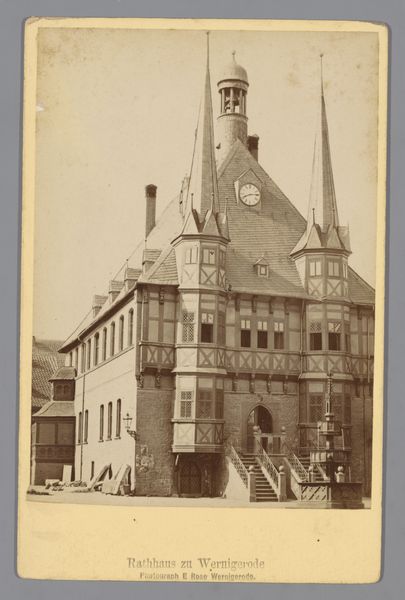
Kapel op de binnenplaats van het kasteel van Blois c. 1880 - 1900
0:00
0:00
print, photography, site-specific, architecture
# print
#
landscape
#
photography
#
site-specific
#
cityscape
#
architecture
Dimensions: height 346 mm, width 254 mm
Copyright: Rijks Museum: Open Domain
Curator: Here we have Médéric Mieusement's photograph, "Kapel op de binnenplaats van het kasteel van Blois," taken sometime between 1880 and 1900. It’s currently held here at the Rijksmuseum. Editor: The sepia tones give it such a solemn air. Look at the sharp lines of the architecture against the somewhat blank courtyard, it is austere and formal. It’s fascinating how the texture of the stone almost glows, do you agree? Curator: It absolutely resonates with its time. Photography during this period was closely linked to architectural documentation and preservation. Consider the context: post-French Revolution, the need to catalog and maintain national heritage became paramount. Mieusement's work embodies this movement. He worked for the Commission des Monuments Historiques! Editor: Which explains his attention to detail! The rendering of each stone, each column is so crisp. It's not just a visual record; it’s a tactile one, right? You can almost feel the weight and coolness of the materials. Tell me, what do we know of the social environment for making these photographs available for people at the time? Curator: Mieusement's photos were vital for circulating images of national treasures, informing architectural study and public appreciation. Photography played a crucial role in shaping a shared French identity through visual culture. Think of the power of accessible imagery, even in black and white, in constructing a collective sense of history. Editor: And who was using these images, in particular? Because those decisions affect which monuments receive focus, whose stories get prioritized and funded, wouldn't you say? Curator: Precisely. These photographs had influence over who controlled funds for upkeep and shaped historical consciousness for an elite audience. These decisions of preservation have socio-political implications for generations. Editor: Considering it today, the photograph as a carefully crafted object... the interplay of light and shadow across the stone, the sharp angles balanced by the soft, aging tones. You start to ponder its lasting impact on material, photographic, and architectural discourse. Curator: Indeed. It's a visual artifact imbued with historical weight, prompting us to consider how the past is constructed, consumed, and, crucially, preserved. Editor: A wonderful thing to reflect upon.
Comments
No comments
Be the first to comment and join the conversation on the ultimate creative platform.
